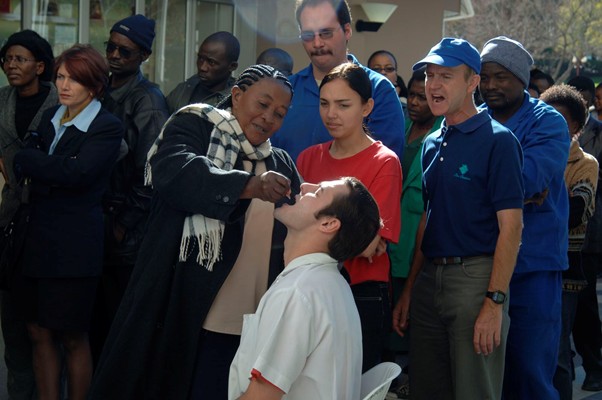Responding to new polio outbreaks
Outlining the ideal response from both affected countries and the international organisations that support them

Polio is a cunning virus. Just when a nation becomes a little too comfortable with their polio-free status, or when insecurity or some other disruption gets in the way of strong population immunity, that’s when polio pops up and attacks vulnerable communities.
As such, outbreaks will continue to occur until polio is completely eradicated. The Global Polio Eradication Initiative (GPEI) is hard at work making that happen; and the new Polio Eradication and Endgame Strategic Plan 2013-2018 has been designed to wipe out this virus within the next six years. But, in the meantime, the GPEI and the global community will have to be prepared to gain quick control over new outbreaks.
The World Health Assembly’s 2006 resolution on polio eradication – WHA59.1 – is considered the holy book of polio outbreak response. It contains a series of recommendations outlining the ideal response both from the affected country and the international organizations that support them.
Thanks to the resolution and the lessons learned since it was passed, the GPEI is getting better and better at putting an end to new outbreaks. Since 2011, only one outbreak has lasted longer than six months. In 2008, it took an average of 20 weeks to put a stop to a new outbreak; but by 2011, that was whittled down to 12 weeks.
So what exactly does the ideal outbreak response look like? Here is a breakdown:
The response in the affected country begins immediately. Within 72 hours of the first polio case being confirmed, the country will conduct an initial investigation, activate the local response and make a request for an international risk assessment (if needed), so that they it can put together an emergency action plan. At least one mass polio immunization round will be conducted within the first 28 days, reaching at least two million children in the immediate area depending on the country’s population, with at least two vaccination campaigns to follow. Surveillance should also be sensitized enhanced, and routine immunization should be boosted to reach at least 80% of children across the country.
Internationally, it’s all about providing support to the affected country. Immediate priorities are to ensure they have enough funds, vaccines, finger markers and technical assistance to plan and execute their emergency plans. Outbreak managers are appointed at the regional and global level to coordinate with their counterparts on the ground, and within seven days the emergency action plan will be shared across the spearheading partner agencies.
However, putting a stop to new outbreaks is about so much more than simply being reactive. First of all there is the continuing research into improving the tools and tactics used to tackle polio. So part of the reason why outbreaks are now being stopped more quickly than ever before is due to things like improved surveillance and lab methods (meaning it now takes less time to confirm the presence of polio; hence less time to conduct the first response campaign) and the fact that the GPEI now has more personnel at its disposal (including STOP teams), ready to be deployed to newly affected countries.
Better than outbreak control is outbreak prevention, and the ultimate prevention will be the eradication of polio and stronger immunization systems.
Related
Learning lessons the hard way
Horn of Africa polio outbreak
Success against polio by end-2014 a realistic prospect: IMB













